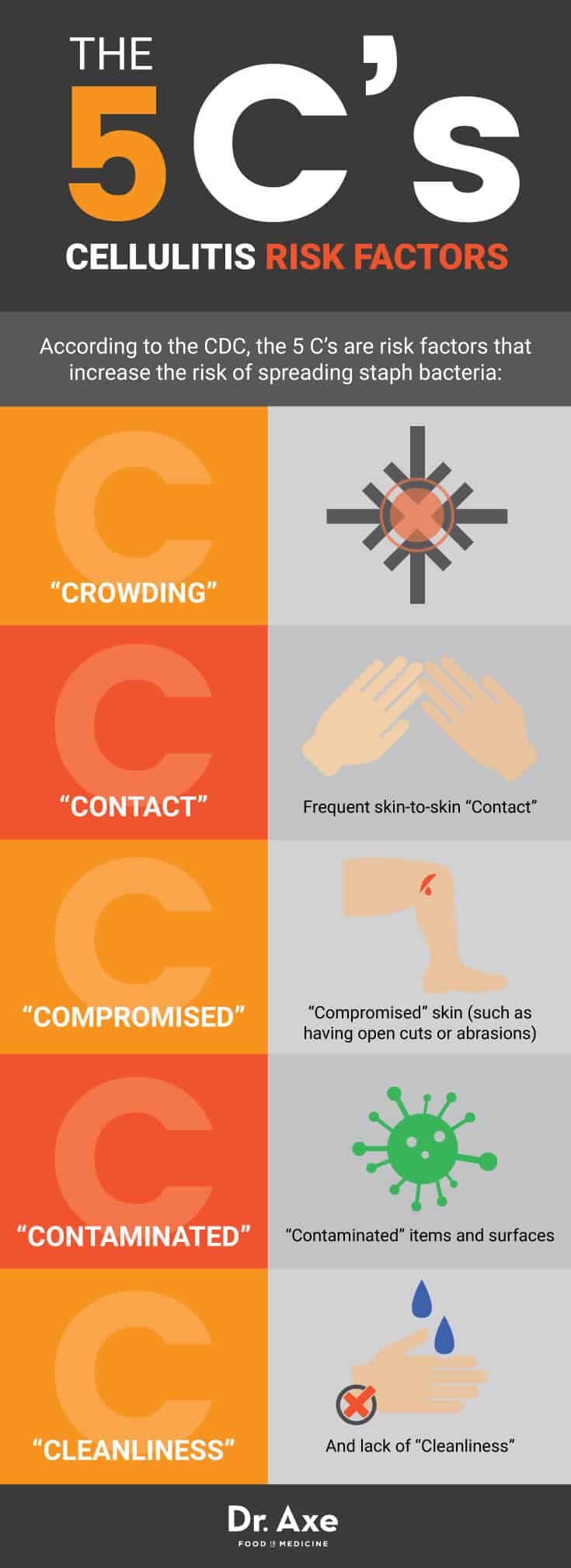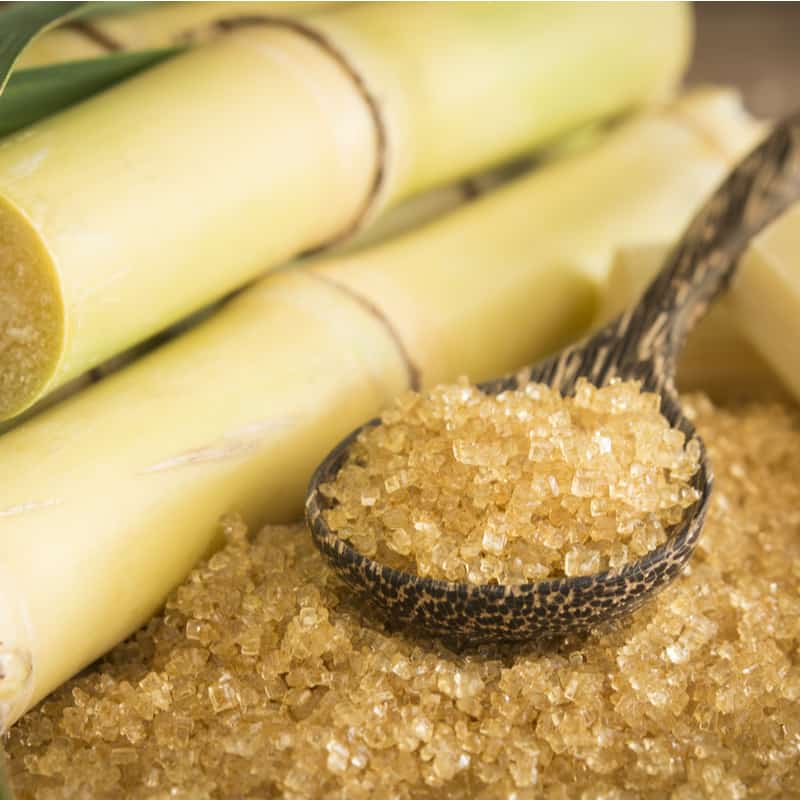This Dr. Axe content is medically reviewed or fact checked to ensure factually accurate information.
With strict editorial sourcing guidelines, we only link to academic research institutions, reputable media sites and, when research is available, medically peer-reviewed studies. Note that the numbers in parentheses (1, 2, etc.) are clickable links to these studies.
The information in our articles is NOT intended to replace a one-on-one relationship with a qualified health care professional and is not intended as medical advice.
This article is based on scientific evidence, written by experts and fact checked by our trained editorial staff. Note that the numbers in parentheses (1, 2, etc.) are clickable links to medically peer-reviewed studies.
Our team includes licensed nutritionists and dietitians, certified health education specialists, as well as certified strength and conditioning specialists, personal trainers and corrective exercise specialists. Our team aims to be not only thorough with its research, but also objective and unbiased.
The information in our articles is NOT intended to replace a one-on-one relationship with a qualified health care professional and is not intended as medical advice.
Cellulitis Treatment: Natural Remedies & Prevention Tips
December 19, 2016

Considered to be the most common types of illness caused by staph bacteria, cellulitis is a painful, sometimes blistering skin infection that affects hundreds of thousands of adults every year in the United States, leading many to search for cellulitis treatment that actually works. (1)
While cellulitis symptoms can usually be managed well with cellulitis treatment — such as drainage of skin blisters or sometimes antibiotics medication — especially when caught early, complications due to cellulitis infection are also possible, much like a staph infection. Potentially serious complications caused by cellulitis can include developing large, painful abscesses below the skin, damage to the lymphatic vessels, permanent swelling of the affected tissue, permanently destroyed skin tissue, and the spreading of bacteria through the blood (called bacteremia, which is life-threatening).
Wondering if cellulitis is contagious? Yes, the types of staph bacteria that cause cellulitis can be transmitted from person to person or even from animals to people in some cases. Skin-to-skin contact with someone who carries staph bacteria along with sharing personal items are the two most common ways that bacteria are passed between patients. According to the Centers For Disease Control and Prevention, several factors increase the risk for spreading staph bacteria that cause cellulitis. These factors are referred to as the “5 C’s”: (2)
- Crowding
- Frequent skin-to-skin Contact
- Compromised skin (such as having open cuts or abrasions)
- Contaminated items and surfaces
- And lack of Cleanliness
It’s been found that conditions common to certain types of work and living spaces make infection more likely. Areas where you’re most likely to become infected with staph bacteria (if you don’t already have any living on your skin) include schools, dormitories, military barracks, athletic gyms, households, correctional facilities, day care centers, and sometimes hospitals or veterinary centers.
Luckily, there are natural cellulitis treatment options, such as protecting open cuts, practicing good hygiene, treating the infection and more.
Natural Cellulitis Treatment
1. Increase Immune Function by Avoiding Antibacterial Overkill
The resistance that certain strains of bacteria and viruses have developed against antibiotics (and common antibacterial products used at home too) is now considered a global health crisis. Antibacterial overkill — in the form of taking too many antibiotic drugs for common illnesses, giving antibiotics to livestock and overusing household antibacterial products from a young age — can all hinder the development of the immune system by altering the composition of the microbiome.
These factors contribute to the development of what are being called superbugs or mutated bacteria that we commonly have no way of controlling. Over the course of several decades, Staphylococcus bacteria have morphed into highly antibiotic-resistant superbug bacteria (MRSA) because of overexposure to such components, and this affects all of us and is unfortunately not an easy problem to fix.
When antibacterials and antibiotics prevent the immune system from learning how to defend against invaders, the immune system can remain highly reactive throughout the adult years (a concept known as the hygiene hypothesis). This makes it harder to prevent bacterial infections, including cellulitis or staph infections, from developing and raises the risk for other health problems tied to poor immunity as well — such as allergies, hay fever, autoimmune disorder symptoms and asthma, for example.
Balance is everything when it comes to bacteria exposure, so remember that being “too clean” (aka antibacterial overkill) is not always the optimal route to building strong immunity against pathogens. Only using antibiotics when completely necessary, breastfeeding infants and avoiding harsh antibacterial toxins/chemicals are important steps for maintaining strong immunity. Also try to only consume grass-fed or pasture-raised meat that’s not raised with use of antibiotics, avoid farm-raised fish, and improve gut health by avoiding the risk factors described above.
2. Clean and Protect Open Cuts on Your Skin
Steps you can take to treat open cuts in your skin and prevent bacteria from further proliferating include:
- Gently wash your skin, especially any open wound or cuts, daily with natural antibacterial soap and water or some Manuka honey. If your doctor performs an incision, always follow directions regarding how to cleanse the wound, plus those for the application of bandages or ointments. Be sure to wash your hands before touching openings in your skin.
- Look for any signs of an infection forming near wounds, including swelling, redness, heat, tenderness or pain. If you notice any blisters or cysts forming that contain pus (these may look yellow or form a white head), let your doctor know right away.
- When you have any scab, scrape, cut or burn, apply a protective cream or ointment to help with healing. Keep skin moisturized to prevent cracking and peeling. You can make your own homemade treatment using natural antibacterial essential oils, which can be used in the same way as most over-the-counter antibiotic ointments (such as Neosporin).
- Keep damaged or irritated skin cool, damp if necessary (by applying moist bandages if you’re doctor recommends this) and elevated if swelling is bad. (3) Keep healing skin away from very hot water or very cold temperatures.
- Avoid applying any irritating or toxic chemical products to your skin while it’s healing, including perfumes, soaps, lotions, makeup, etc., and instead opt for natural cleaning products.
- Keep damaged or sensitive skin out of extreme cold or heat. Avoid sunlight if skin is healing, or consider wearing gloves and a hat depending on the weather.

3. Practice Good Hygiene
Keeping the skin clean and improving circulation (blood flow) to the skin are important for preventing infections. Here are several steps to practice good skin hygiene as a preventative cellulitis treatment:
- If you have any skin infections that you notice causing symptoms, such as redness and itching, make sure to treat the infection with a natural antifungal cream. This may be due to conditions such as athlete’s foot or chickenpox/shingles, which are contagious. Be careful not to touch the skin of anyone else who is infected with a fungal infection, plus carefully wash your hands after leaving any health facility and using shared equipment.
- Wash and moisturize linens you touch regularly (like your sheets), your skin and clothing using natural products regularly, especially if you’ve been near anyone who is sick with an infection.
- Don’t share items like razors or other products that touch the skin.
- Drink enough water throughout the day, and eat a healthy diet to prevent skin from from becoming dehydrated and cracking. This also helps with healing skin rashes or peeling.
- If you have any medical condition that lowers blood flow/circulation, such as diabetes, check that your skin is not forming patches of dry, peeling or red skin. These can appear on the lower limbs, feet or hands and be a sign of damage that can lead to infection due to poor drainage.
4. Treat Infection Pain/Swelling with Natural Products
To help ease discomfort caused by the infection, including blisters and inflammation, some of the following methods can be used:
- Press a warm compress against the rash once or twice daily using a fresh, clean washcloth or towel.
- Soak inflamed skin under a warm shower (but not too hot) or in a warm bath.
- Very gentle stretch stiff areas to keep them from getting even more stiff.
- Wear loose, breathable clothing made from natural fibers.
- Keep any chemical products or skin irritants off the affected area (perfume, scented body soaps, detergents, lotions, etc.).
- With clearance from your doctor first, apply soothing essential oils, such as a rash cream with lavender oil, to irritated or swollen skin, combined with a moisturizing carrier oil, such as coconut oil, several times daily. Chamomile oil and tea tree oil are also beneficial for helping the skin heal and feel less inflamed.
What Is Cellulitis?
Cellulitis is a bacterial infection of the skin that affects between 2 percent to 3 percent of adults. It develops due to bacteria proliferating within the dermal and subcutaneous layers of the skin. Most skin infections due to staph bacteria are minor, such as the kinds that cause redness and small, fluid-filled boils — however, others are much more serious, requiring emergency intervention in order to prevent complications from affecting other parts of the body.
The bacteria that cause cellulitis usually enter the skin through open cuts or wounds, then reproduce rapidly within small, enclosed pockets of tissue. While a number of different bacteria can cause cellulitis, the two most common are Streptococcus and Staphylococcus. Skin-to-skin contact with someone who carries these bacteria along with sharing personal items are the two most common ways that bacteria are passed from person to person.
Cellulitis symptoms caused by proliferation of these bacteria usually include skin redness, pain, tenderness and the formation of painful blisters, along with symptoms of a fever in some cases. (4) For some patients with cellulitis, bacteria are able to penetrate deeper within the body to enclosed tissues below the surface of the skin, causing inflammation and infiltrating into the bloodstream. Rarely this can affect the blood vessels and vital organs. (5)
What Causes Cellulitis?
The name of the bacteria responsible for most cases of cellulitis infections is Staphylococcus (specifically group A), which is actually very common and lives on the skin of approximately 30 percent of even healthy adults. However, the reason most people don’t develop infections from coming into contact with Staphylococcus or having it live on their skin for extended periods of time is because their immune systems are able to control how much the bacteria can proliferate.
Cellulitis symptoms develop due to the body’s inflammatory responses (the body trying to protect itself from fighting the bacteria), as well as from irritation and swelling due to the proliferation of harmful bacteria.
Several conditions that can weaken someone’s immune system and raise the risk for many different viruses and bacterial infections include autoimmune disorders, such as lupus, diabetes, leukemia and HIV/AIDS. Other risk factors for developing infections of all kinds include being very stressed (emotionally or physically, such as due to exhaustion), obesity, eating an unhealthy diet that results in deficiencies, taking corticosteroid medications, smoking cigarettes and using drugs. All of these factors can negatively affect gut health and therefore the entire immune system.

What Are the Symptoms of Cellulitis?
Most of the time, only one side of a patient’s body is affected by a cellulitis infection, usually one leg, foot or hand that develops a rash. While the lower extremities/legs are the most likely spots to develop a cellulitis rash (around 40 percent of all cases occur on the legs), anywhere on the skin that has an open cut, incision or wound can develop cellulitis.
The most common signs and symptoms of cellulitis infection are:
- Redness of the skin, which becomes worse as the skin rash due to infection spreads
- Pain and tenderness on the surface of the skin, especially if blisters on the skin form or when pressing down on the infected area. Pain and redness are usually the first symptoms to emerge and an indication that cellulitis treatment is needed.
- Swelling of the skin, heat and inflammation
- Changes in the color of skin, including turning orange or bright red
- Developing pus- or fluid-filled blisters
- Symptoms of a fever, including fatigue, weakness, chills and sometimes nausea/vomiting
- With severe infections, some patients experience rapid heart rate, headaches, low blood pressure, dizziness and confusion.
- Complications of cellulitis can include swelling in the lymph nodes (called lymphadenitis) or inflammation of the blood vessels in the lymphatic system (called lymphangitis). Rarely it’s also possible for serious infections to leave behind permanent nerve or tissue damage, or to cause abscesses that keep coming back.
Conventional Cellulitis Treatment
The standard cellulitis treatment is to use antibiotics. Antibiotics used to manage cellulitis infections by reducing staph bacteria include dicloxacillin, cephalexin, trimethoprim with sulfamethoxazole, clindamycin, or doxycycline. Dicloxacillin or cephalexin are the “oral therapy of choice” when methicillin-resistant Staphylococcus aureus (commonly known as MRSA) is not a concern. (6) These are normally taken for five to 10 days or sometimes up to 14 days if the infection continues to cause symptoms.
People who have already developed serious infection symptoms by the time they seek help are normally hospitalized and given antibiotics intravenously in order to reduce the infection as quickly as possible. Cellulitis treatment options given by vein for severe infections include oxacillin or nafcillin. When complications don’t develop due to cellulitis, in most cases symptoms usually go away within several days following cellulitis treatment.
Some patients actually experience worsened symptoms before they start to get better. When large amounts of cellulitis bacteria die, they can leave behind irritating byproducts that can cause the skin to keep reacting by raising inflammation. If this is the case, it can take more than one week (around seven to 10 days) for cellulitis symptoms to subside.
Although antibiotics are normally capable of managing cellulitis symptoms in the majority of cases, increasingly these types of infections are becoming antibiotic resistant. This means that even when patients are given multiple courses of antibiotics, bacteria causing the infection can continue to proliferate and spread. A type of Staphylococcus bacteria strain called MRSA has been found to be capable of surviving even with use of previously effective antibiotic treatments. MRSA is now a growing concern globally and increasingly causing life-threatening symptoms that can affect the entire body.
In addition to prescribing antibiotics, or sometimes in place of using them altogether, doctors may choose to open and drain an infected cellulitis abscess that has formed below the surface of the skin. Draining abscesses or boils helps relieve fluid or pus buildup and lowers swelling. Cellulitis abscess drainage is usually only needed when the infection causes painful symptoms or when complications occur. This should always be done by a doctor to prevent bleeding or complications, so to be safe don’t try to drain a boil/abscess yourself. Signs that an abscess may need to be opened and drained can include: (7)
- Presence of large violaceous bullae (fluid-filled sacs below the skin that cannot drain)
- Hemorrhage below the skin (internal bleeding due to blood being trapped)
- Skin sloughing or numbing/anesthesia
- Rapid spreading of redness and swelling
- Gas forming inside affected skin tissue
- Blood pressure changes
- High fever symptoms
When edema, blisters or abscess formations become very bad, the patient is normally kept immobile in the hospital (such as putting the patient on bed rest), cool and damp to help the skin heal and reduce internal swelling/heat. The body part where the infection develops is also elevated, while wet dressings or bandages might be applied along with ointment.
Precautions Regarding Cellulitis Treatment
Always visit your doctor for an evaluation and guidance regarding cellulitis treatment if you suspect you may have cellulitis. Staph infections of the skin can sometimes be very serious, especially for people who are already ill, have existing skin disorder symptoms, the elderly, women who are pregnant or those who have weakened immune systems.
For patients who have any of the following health problems/conditions, be sure to get help right away for cellulitis symptoms (or any other signs of a staph infection) by visiting the emergency room or your doctor. After receiving instructions on how to treat the infection, if you notice symptoms aren’t getting better after 48 hours, contact your doctor again and avoid close contact with those you live or work with.
Final Thoughts on Cellulitis Treatment
- Cellulitis is a bacterial infection that causes a red, painful rash on the skin, sometimes spreading deeper to tissues below the skin and forming abscesses. In serious cases, the bacteria that cause cellulitis infections can also spread into the bloodstream and then to vital organs, such as the heart or lungs.
- Symptoms of cellulitis include skin redness and pain, tenderness and heat/swelling over the affected area, skin blisters or abscesses, and sometimes symptoms of a fever.
- Risk factors for developing cellulitis include have a weakened immune system, poor gut health, having open cuts or wounds on the skin, live anywhere in tight quarters that’s contaminated with bacteria, and not practicing good hygiene.
- Prevention and natural cellulitis treatment options include boosting immunity with a healthy diet, avoiding “antibacterial overkill” as described above, cleaning and protecting any open cuts on the skin, washing your hands regularly, and treating skin pain with heat and essential oils.








